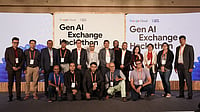While the social media platforms are flooded with Ghibli-style AI portraits, the image generation feature of OpenAI’s ChatGPT can now create ‘fake’ Aadhaar cards and PAN cards. Yes, you read it right. Netizens have shared images of fake identity verification documents created using ChatGPT’s image generator.
This has raised concerns among users about how artificial intelligence tools can be misused for sensitive information. “So ChatGPT can create Aadhaar images. That’s not the interesting thing, The interesting thing is where did it get the Aadhaar photos data for training,” one user wrote on X (formerly Twitter).
"ChatGPT just generated a fake PAN card in seconds. Imagine if this tech gets into the wrong hands — Aadhar, PAN, IDs, everything can be replicated. This is cool and terrifying. We’re not ready," another user said.
Other users also shared AI-generated images featuring OpenAI CEO Sam Altman and Tesla CEO Elon Musk with their faces superimposed into Aadhaar cards, complete with QR codes and seemingly authentic Aadhaar numbers.
Aadhaar card is issued by the Unique Identification Authority of India (UIDAI) for the identity verification of an individual, while a PAN card is issued by the Income Tax Department.
How Does GPT-4o Work?
GPT-4o is equipped with image output, "thinks" a bit longer than DALL-E 3 (OpenAI’s previous image generation model) to produce images that are more accurate and detailed.
This new image generator is part of the same model that generates text and code, as OpenAI trained the entire system to understand multiple forms of media simultaneously. This contrasts with DALL-E 3, which is a traditional diffusion transformer model designed to reconstruct images from text prompts by denoising pixels.
The models were trained on the joint distribution of online text and images, enabling them to learn how language connects to both visuals and images. Intensive post-training has made the final model exceptional in visual fluency, producing consistent, context-aware, and useful images.
GPT-4o generates images with remarkable precision by strictly following the prompts with attention to detail. While many other systems struggle to accurately render scenes with as few as five to eight objects, GPT-4o can manage between 10 and 20. The tighter binding of objects to their traits and relations allows for better control. Additionally, GPT-4o can analyze user-uploaded photographs, seamlessly integrating their details into the synthesised image's context.






























